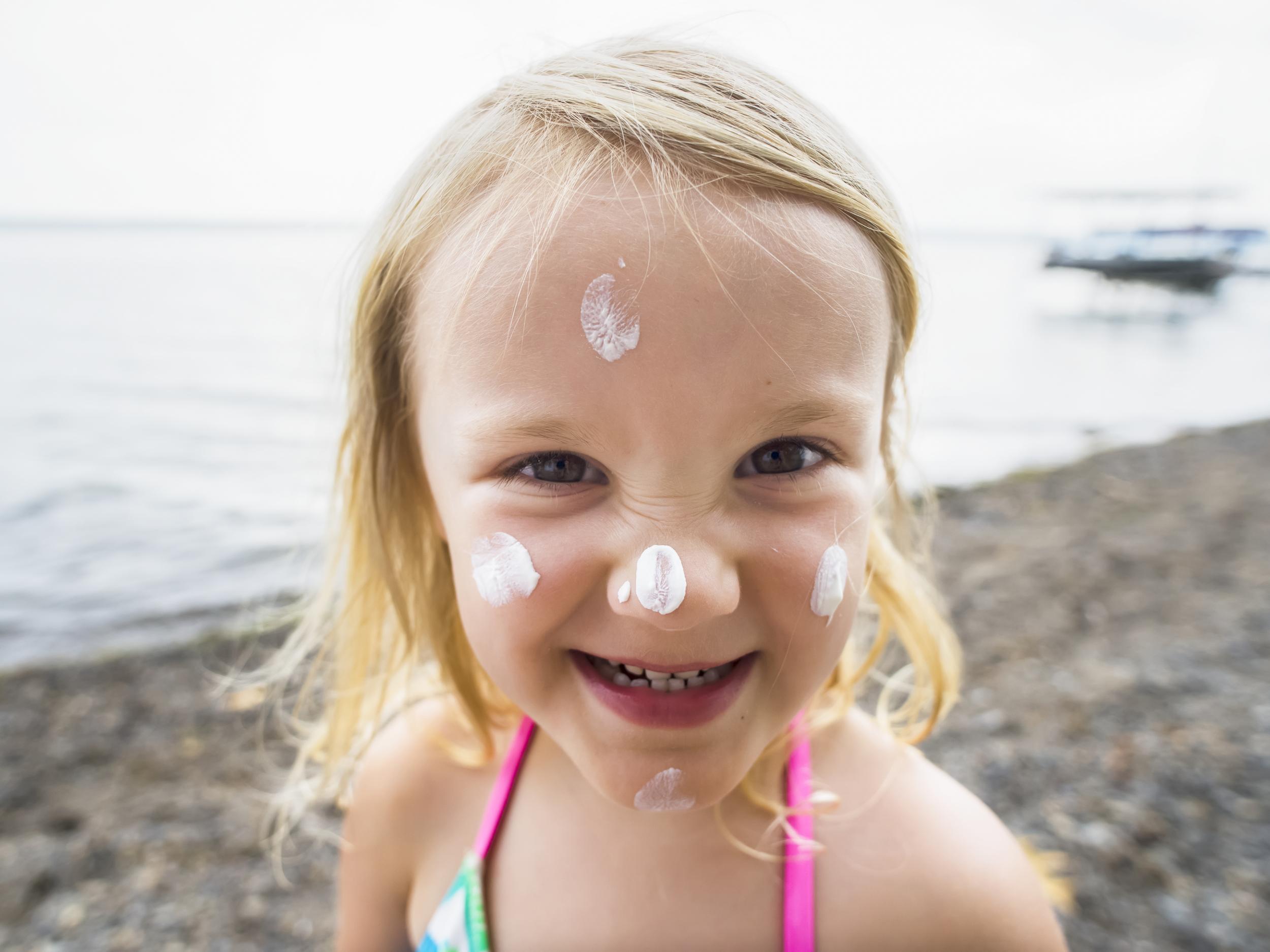Sunscreen users get less than half the sun protection they think, study finds
Scientists recommend using creams with even higher SPF to avoid risk of skin cancer

As temperatures soar across the UK, scientists have raised the alarm on widespread misuse of sunscreen, which is placing people at risk of skin cancer.
Based on typical use, researchers at King’s College London found that some of the most powerful sunscreens are providing inadequate sun protection as people apply it far more thinly than manufacturers recommend.
In their tests, cream with a sun protection factor (SPF) of 50 provided no more than 40 per cent of the expected protection.
The scientists recommended that people opt for sunscreens with much higher SPF if they want to properly protect themselves from the sun’s rays.
“There is no dispute that sunscreen provides important protection against the cancer-causing impact of the sun’s ultraviolet rays,” said Professor Antony Young, a photobiologist who led the study.
“However, what this research shows is that the way sunscreen is applied plays an important role in determining how effective it is.”
Previous studies have shown that people typically apply between 20 and 60 per cent of what is needed to achieve the SPF advertised on bottles.
Historic sites across UK exposed by heatwave
Show all 15The required thickness on the skin can be achieved by following the “teaspoon rule” of sunscreen application, with around half a teaspoon of cream applied to each arm, the face and neck, and just over a teaspoon added to each leg, the chest and back.
To test the effect of applying less than this amount, Professor Young and his team divided a group of 16 fair-skinned volunteers into groups and applied sunscreen of varying SPFs and thickness.
They then exposed the volunteers to ultraviolet lights to test how the different levels of sunscreen fared in the sun.
The scientists tested skin samples for DNA damage of the kind that could lead to skin cancer.
In doing so, they were able to test the effect of inadequate sunscreen application in comparison to skin that has been properly treated.
These findings were published in the journal Acta Dermato-Venereology.
“This research demonstrates why it’s so important to choose an SPF of 30 or more,” said Nina Goad of the British Association of Dermatologists, who was not involved in the study.
“In theory, an SPF of 15 should be sufficient, but we know that in real-world situations, we need the additional protection offered by a higher SPF.
“It also shows why we shouldn’t rely on sunscreen alone for sun protection, but we should also use clothing and shade. An extra consideration is that when we apply sunscreen, we are prone to missing patches of skin, as well as applying it too thinly.”
Skin cancer is an increasing public health burden in many countries, and Professor Young and his colleagues said there was a need for campaigns to communicate how to use sunscreen effectively in a manner that actually protects skin.
Subscribe to Independent Premium to bookmark this article
Want to bookmark your favourite articles and stories to read or reference later? Start your Independent Premium subscription today.

Join our commenting forum
Join thought-provoking conversations, follow other Independent readers and see their replies